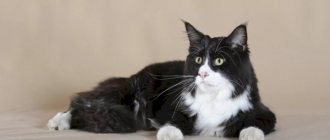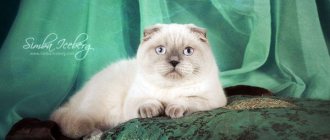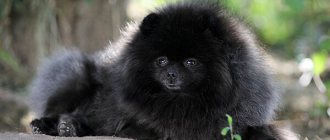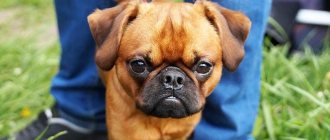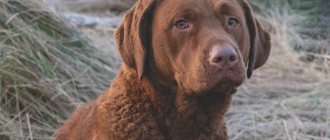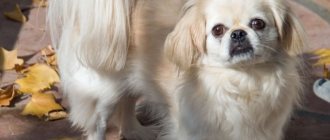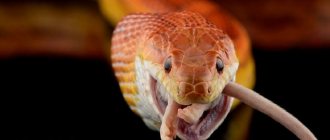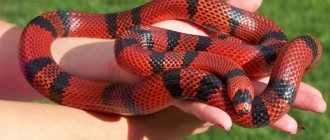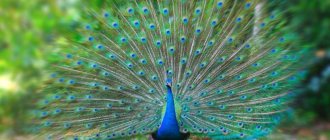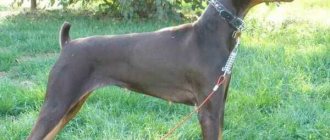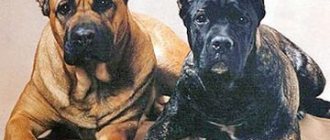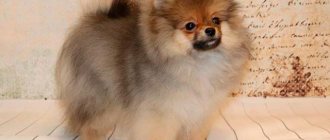A predatory look, a muscular, powerful body and myths about their fighting past make Stafford dogs monsters among the representatives of the dog world. In fact, dog fighting is just a sick hobby of people who decide to make the dog a participant in fights for money. Stafford can be an affectionate and kind pet. Especially the blue Staffordshire Terrier.
The blue Stafford can be an affectionate and devoted pet.
Myths about the “blue color”
In recent years, the blue color has become very popular among Staffordshire Bull Terrier owners and currently accounts for the largest percentage of registered colors in the breed's homeland of Great Britain. Unfortunately, the growing popularity of this color has led to irresponsible breeding solely for color due to the high prices for such puppies. Some blue only breeders make many false claims about their Staffbulls to justify their cost.
Some myths
- Never in the history of the breed has any Blue Staffordshire Bull Terrier been recognized as a Top Producer.
- Never in the history of the breed has any blue Staffordshire bull terrier won the title of Champion of England.
- No blue Staffordshire Bull Terrier has a black nose or black nails (genetically impossible)
- Not a single blue Staffordshire Bull Terrier is pure blue (all blue Staffbulls are genetically blue brindle, it’s just that brindle is more or less pronounced)
- Blue coloring in Staffordshire Bull Terriers is not uncommon.
How did the blue color come about?
Roughly speaking, the blue color in the Staffordshire Bull Terrier breed is the result of an abnormality of the black-brindle gene, causing a weakening of the latter. This is a gene that affects the formation of hairs with larger (non-standard) pigment granules due to disruption of melanin transport and content. This “clumping” of pigment leads to “washing out” and weakening of the color. This gene is recessive, i.e. In order for a Staff Bull to have a weakened (blue) color, it must inherit this gene from both parents. Essentially blue is black and brindle when “something has gone wrong.”
Eg
A black and brindle Staffbull (not carrying the dilute gene) mated to a black and brindle Staffbull bitch (not carrying the dilute gene) will produce black and brindle puppies that will also not carry the gene.
A black brindle Staffbull (not carrying the dilute color gene) mated to a blue Staffbu bitch will produce black brindle puppies that will partially carry the dilute color gene.
A blue Staffbull mated to a black brindle Staffbull bitch who carries the dilute color gene will produce both blue and black brindle puppies, all of which will carry the dilute color gene.
A blue Staffbull mated to a blue Staffbull bitch will produce a litter that will be entirely of a weakened color.
There is concern that blue (weakened) Staffordshire Bull Terriers are at increased risk of skin problems associated with this mutation. It is generally accepted that the long-term practice of breeding blues with blues over several generations leads to a problem such as CDA (color dilution alopecia).
CDA (Color Diminution Alopecia) is associated with a color dilution gene, probably the D locus. Under the influence of multiple genes, color diluted hair has larger, abnormal pigment granules due to disruption of the transport and storage of melanin. It is this “accumulation” of pigment that leads to blurring or weakening of the color. It is still not known for certain whether the weakened color gene is directly responsible for changes in skin quality or whether there is a gene associated with it that causes changes in the follicles. However, it is absolutely certain that the accumulation of pigment leads to deformation of the hair shafts and their fractures, which leads to alopecia.
Can a blue dog be exhibited?
If your Staffordshire Bull Terrier has a certificate of origin of the appropriate type, is registered in the kennel club of the FCI country or a partner country, then you can participate with it in exhibitions along with other dogs. Blue color is recognized as the standard among others. A good dog is a good dog regardless of color. Experts at exhibitions are called upon to judge and do not judge color, but rather the dog’s compliance with the breed standard.
The reason why Blue Staffordshire Bull Terriers have traditionally not been very successful in the show ring is that when breeding them, breeders often have the goal of color rather than standard dogs. But nevertheless, history knows several examples of high-class blue staffbulls that were exhibited and achieved success.
Source
Raising puppies
Staffordshire Terriers are mothers of many children. At one time, an Amstaff gives birth to 6 to 10 puppies. If you decide to get a four-legged pet of this breed, be sure to ask the breeder about its pedigree. You should also obtain information about the habits and feeding schedule, vaccinations, the character of the animal itself and its parents. If your pet has brothers and sisters from other litters, you should also ask about their habits. Particular attention should be paid to all this if you are going to take part in breed work and dog shows in the future.
Stafford puppies are incredibly active, playful and inquisitive. In order for their energy to go in the right direction, raising pets must be regular and consistent.
Breeders give several important recommendations for keeping a new family member.
- Typically, moving to a new home occurs in Staffordshire Terriers at 2 months. From the first day of life with its new owners, the dog must understand what can be done and what is strictly prohibited. All people living in the apartment must strictly follow the established rules. Otherwise, the animal will quickly become disillusioned with one owner and will seek loyalty from another.
- Staffies usually begin to change their baby teeth at 4 months. During this period, they scratch their jaws on everything that gets in their way, and they can chew off the owner’s important things. To prevent this from happening, you need to purchase special toys.
- Staff puppies must have their own place where they can rest and sleep peacefully. The sleeping area can be arranged in the hallway or the owner's room. It is important not to allow the animal to go to a person’s bed; then it will be extremely difficult to wean him from this habit.
- Despite the fact that the little dog is incredibly active, physical activity at a young age should be strictly dosed. Overwork can negatively affect your pet's health and lead to improper development of joints and skeletal bones.
- Only the owner should raise the animal. Outsiders are strictly prohibited from interfering in this process.
- After a walk, you need to wash the animal’s paws and carefully examine them for injuries and cuts.
- You can raise a baby only in commands, without shouting or assault. To scold an animal for disobedience, it is quite enough to speak to it in a stern voice.
- You can feed your little Staffordshire only after a walk. Active games and running on a full stomach can cause digestive problems and cause a sagging tummy. In addition, a well-fed puppy will get tired much faster and want to sleep.
- Bowls for food and drink must be on stands. Their height must be increased as the pet matures and grows.
- The puppy's daily diet should contain at least 30% protein food. Protein is the most important building material, which is especially necessary for a growing body.
In order for your little pet to always be healthy and cheerful, it is necessary not only to properly care for him, but also to get vaccinations in a timely manner. As a rule, the first vaccine is given to an animal at two months. Until this age, he is protected from diseases by immunity transmitted from his mother. 2 weeks before vaccination it is necessary to carry out deworming. A veterinarian will develop a detailed vaccination schedule. At about four months, the animal's teeth begin to change. If any vaccination falls during this time, it is better to reschedule it to avoid complications.
The American Staffordshire Terrier is a muscular fighter with a noble heart.
Content
The American Staffordshire Terrier, also called Staff, Amstaff or Stafford, is considered a truly versatile dog. Among the Staffords you can often find detectives, rescuers and guides. But they gained their popularity more as family dogs - loyal, brave, smart and loving children. In addition, Staffordshire Terriers love to spend time actively and will gladly accompany their owner on fishing, travel and sports.
Character
For a long time, the American Staffordshire Terrier was considered an aggressive dog. Breeders have dispelled these myths by the very behavior of the animal in relation to humans and other animals. Dogs are infinitely devoted to the entire family of their owner. They have a soft, good-natured character, are cheerful and active.
The dog understands the difference between adults and children. He treats children with reverence and tenderness. When playing with children, she is always careful and does not allow any sudden movements or threatening sounds on her part. She will be a caring nanny and a good protector for the children. It attacks people as a last resort if it sees a direct threat to the life of the owner.
Unmotivated cases of aggressive behavior are excluded to the maximum extent possible in the breed standard. Proper upbringing of the Amstaff results in a reserved but courageous pet, ready to defend the owner to the last, but only on command.
Despite its menacing appearance, the Blue Stafford has a good-natured and friendly character.
Brief history of origin
The United States of America is considered the birthplace of the breed. The ancestors of Staffords in Medieval England were regular participants in dog competitions with bears, bulls and wild boars. In 1835, the English Parliament banned all fighting involving bulls, but, unfortunately, fights between dogs were invented almost immediately. Because of such an unpleasant past, American Staff Terriers have long been considered exclusively fighting dogs - dangerous, aggressive and unpredictable. Since 1930, Amstaffs have not officially taken part in battles. Now the opinion about them has changed in the opposite direction - representatives of the breed are only show dogs for exhibitions and companions.
Origin of the breed
The Stafford breed, or Amstaff, as they are also called, begins its history in the 19th century. Modern Staffords acquired their name relatively recently - in 1972. They used to be called pit bulls or bull terriers. Although many still call them that today. The exterior of Amstaffs is the result of crossing Game Terriers with Bulldogs.
Work on the characteristics of this breed made it possible to obtain a dog with innate activity that has no equal. Its original purpose was as a participant in dog fighting. But upon long-term observation, it turned out that the dogs have excellent hunter abilities, and also have extraordinary intelligence. Thus, Amstaffs appeared in human domains as guards of houses, farmlands, and even participated in herding cattle. And a little later they became friends and companions for the person.
Representatives of the blue color of the breed, like other colors, were bred through the painstaking work of specialists.
Their task was to remove aggression from the dog’s character, which had been genetically embedded in the animal’s blood for many years. Note! Modern Staffords are only superficially similar to their formidable, aggressive fighting ancestors.
Today, Staffords are only superficially similar to their fighting ancestors.
Interesting Facts
The history of the breed goes back almost two centuries, but despite this, every year these Staffords do not lose their popularity throughout the world. Several interesting facts will give you the opportunity to get to know American Staffordshire Terriers better:
- Staffs serve in special detachments that are part of the Russian Ministry of Emergency Situations. Dogs of this particular breed were able to locate terrorists with explosives after the terrorist attack in the building of the Theater Center on Dubrovka.
- Staffords love to lie on the couch with their owners and watch TV.
- In Ukraine there is a youth clothing brand called Staff in honor of the American Staffordshire Terriers.
- Staffordshire Terrier puppies are constantly looking for something to chew, so the owner needs to purchase several chew toys for them.
- Representatives of the breed are excellent rat catchers. This ability, apparently, they inherited from their ancestors - English terriers.
The character of doggies and their upbringing
This breed has one of the most contradictory characters. Many even call such dogs aggressive and dangerous. But experts know that these are playful, kind and loyal animals with a fairly balanced character. Negative character traits appear only in those animals that were raised incorrectly. Therefore, the owner needs to realize that Amstaff puppies require a lot of attention and perseverance in training. From a young age they are ready to protect the owner and other family members from danger and protect their territory.
In a family circle, dogs behave like playful children. But if necessary, they are capable of becoming a nanny for small children themselves, patiently enduring their whims. However, it is still better not to leave them with the kids for a long time. After all, a child can inadvertently make the dog lose his temper and then trouble will follow.
Important! Only an adult owner can keep a strong dog from taking negative actions in the event of an emergency. His authority with the dog should not raise questions.
For training, a Staff puppy is purchased at 2 months or a little older. The process begins as soon as he gets comfortable in the apartment. When trained, the dog quickly adopts the habits of the owner, tuning into his wave. Therefore, a person’s character must be strong so as not to melt under the adoring gaze of a pet. Smart Stafford puppies at 2 months understand everything, but often, due to stubbornness, they do not want to carry out given commands.
Training is carried out using the method of reward and punishment. The latter does not mean that the dog should be beaten. Only a slight shake by the scruff of the neck is possible. Pain and screaming will only cause aggression. Sometimes, to punish, it is enough to look closely into the pet’s eyes and not look away until the dog responds with complete obedience. Training should be carried out regularly, gradually achieving the mastery of the necessary commands. The duration of each lesson should not exceed three hours.
Ready for the lesson
Staffordshire Terrier breed standards
In 1936, the American Kennel Club approved the first breed standard. On May 26, 1971, the American Staffordshire Terrier was officially registered by the Fédération Cynologique Internationale. The FCI standard gives the following description of the breed:
- The weight of males should be 25–30 kg, females – 22–25 kg.
- The height of “boys” is 46–48 cm, “girls” is 43–46 cm.
- The head is medium-sized, wide, with a clearly visible transition from the forehead to the muzzle.
- The jaws are strong. Scissor bite. The teeth are large and white.
- The ears are set high and wide, can be cropped or undocked, but erect or raised.
- The nose is black, large, with wide open nostrils.
- The eyes are dark, small, deep-set.
- The neck is of medium length, has no folds or dewlap, and looks massive.
- The chest is wide, with slightly protruding ribs.
- The back is straight, short, muscular.
- The limbs are straight, strong, with developed muscles, located parallel to each other. The front ones are widely spaced.
- The paws are small and rounded.
- The tail is short, straight, set low, tapering towards the end.
- The coat is short, straight, fairly thick, shiny, close to the body, and hard.
- The color is varied: single-color, two-color, brindle or spotted.
Important. Completely drooping ears are unacceptable for American Terriers and are considered a defect.
Height and weight chart
An inexperienced dog breeder needs to carefully monitor the development of his little pet, so data on the approximate weight and height in the first year and a half of his life will not be superfluous.
| Age, months | Weight, kg | Height, kg |
| 1 | 2,5–4 | Not taken into account |
| 2 | 6–9 | 25–30 |
| 3 | 9–14 | 30–36 |
| 4 | 14–20 | 35–44 |
| 5 | 17–24 | 38–46 |
| 6 | 19–28 | 42–50 |
| 9 | 24–33 | 42–50 |
| 12 | 25–35 | 43–50 |
| 18 | 25–38 | 44–50 |
This is interesting! The weight of newborn American Staffordshire Terrier puppies, depending on gender, is 250–400 g.
Description and requirements for the breed standard
The Blue Stafford, like his breed brothers of other colors, is an athletic, hardy, courageous and very loyal animal to humans. The dog has excellent qualities as a guard and hunter, but at the same time can be a loyal friend and companion. He treats well not only adults, but also children.
Breed standard
Breed standards define the following parameters:
- The height of males varies from 45 to 48 cm, while that of females does not exceed 46 cm.
- Weight up to 30 kg for males, up to 27 kg for girls.
- Lack of weight, like excess weight, is considered a gross vice.
- The head is powerful with well-defined cheekbones and a noticeable transition between the forehead and muzzle.
- The eyes are deep-set, mostly dark, and small. Representatives of the blue color have gray or blue shades of the cornea of the eye.
- The ears are cropped, but you can do without this procedure; they are slightly curved downwards at the tips.
- Jaws are well developed and powerful
- The nose is black.
- The neck is wide and strong.
- The coat is short, thick, shiny.
- Springy gait on widely spaced strong paws of medium size.
There are many shades of coat. The gray and blue Stafford has a coat with a silver coating and a nose with a grayish tint in the light.
The breed standard was officially adopted in 1972
Varieties of Staffordshire Terriers
Staffordshire Terriers are divided into several types:
- English Staffordshire Terrier (other names: English Staffordshire Bull Terrier, Staff Bull, Staffie);
- American pit bull terrier (another name is pit bull);
- American Staffordshire Terrier;
- standard bull terrier;
- dwarf bull terrier.
These breeds have common ancestors - bulldogs. All these dogs were bred to participate in battles of various specializations. The smallest of these breeds are the dwarf bull terriers, which are a mini version of the standard bull terrier. American Staffordshire Terriers and American Pit Bull Terriers are very similar at first glance, but Amstaffs have a more proportional build. Pit bulls are not recognized by the FCI, so they do not participate in official competitions and exhibitions.
American Terriers, among other things, come in several types:
- proportional – the appearance of staffs of this type is closest to the current standard;
- bulldog-shaped - in appearance, these Staffordshire terriers are more reminiscent of bulldogs: they are inactive, weigh more than 45 kg, have a short neck and a rough build;
- terrier - these Amstaffs have more qualities of terriers: very active, weigh up to 30 kg, have a long neck and a narrow, slightly elongated mouth.
This is interesting. Staffordshire Terriers of proportional type are extremely rare.
History of the breed
The origin of the breed goes back to the beginning of the 19th century. Then one of the entertainments of the English nobility was bullfights , which dogs had to set against each other. In order for the dogs to be sufficiently aggressive, special fighting breeds , among which the leading place was given to bulldogs. However, they were heavy and clumsy, which is why they often died under the hooves of animals.
After crossing a bulldog with a terrier, a new breed was developed - the bull and terrier, ideal for fighting . Now they took part in all the battles. At the end of the 19th century they were brought to America. Many breeders have noticed that some dogs lack aggression, they are friendly and are drawn to people.
In 1936, American breeders officially registered the Staffordshire Terrier breed. In 1972, the word “American” was added to this name.
Color and appearance
According to the current standard, the colors of Stafford dogs are usually as follows:
- Black Amstaffs have a bright and deep color without shades. There may also be small spots on the paws and chest.
- Blue Amstaffs. The coat color of Blue Staffordshire Terriers ranges from light blue to dark blue shades. The nose of dogs is blue (matching the color of their coat). Dark blue Staffords have almost black noses.
- Red Staffords have a uniform coat color, and in individuals with the so-called “boar” color, the main background is red and dark on top.
- The American Black Boston Terrier's coat is a combination of white and black: it is white on the face, neck, paws and back, and the rest of the body is black.
- Among brindle-colored Staffords there are individuals of reddish or brindle colors. Their fur comes in different shades - from red to red.
- In Staffies with a blue-fawn color, the coat has a silvery coating. These dogs' noses are always gray and their eyes are dark.
On a note. The main requirement of the FCI is that white spots should occupy no more than 80% of the dog’s body. In addition, liver, black and tan, and solid white coats are considered faulty.
Blue Stafford - description of the color variety and its features
A predatory look, a muscular, powerful body and myths about their fighting past make Stafford dogs monsters among the representatives of the dog world.
In fact, dog fighting is just a sick hobby of people who decide to make the dog a participant in fights for money. Stafford can be an affectionate and kind pet. Especially the blue Staffordshire Terrier. The blue Stafford can be an affectionate and devoted pet.
Character and behavior
Despite what most people think, Staffordshire Terriers are kind, cheerful, and balanced dogs by nature. They do not show unmotivated aggression towards strangers. Also, representatives of the breed will never bark over trifles. Staffs can be aggressive towards smaller animals, and even get into fights with their relatives. This behavior is usually the result of improper upbringing. Staffordshire Terriers are infinitely devoted to their owner and his family members and love to be the center of attention. In addition, Amstaffs are very attentive: having excellent facial expressions, they literally catch the owner’s facial expression on the fly and try to repeat it.
This is interesting. Among Staff Terriers there are individuals who are terrified of fireworks. The owners of such dogs have to insert earplugs into their pets' ears during fireworks.
Attitude towards children
Staffordshire Terriers have an amazing ability to distinguish children from adults. These dogs are deservedly recognized as one of the best nannies: they adore children - when playing with them, they become more gentle and careful, and in case of danger they will immediately rush to their defense. However, it is better not to leave young children alone with staff.
Watchdog and security qualities
Any experienced dog breeder knows that the Staffordshire Terrier has pronounced watchdog and security qualities. In case of any threat, representatives of the breed will protect the owner, members of his family and the entrusted territory. An angry Staffordshire Terrier dog is difficult to stop - they usually fight until they are completely victorious. Thanks to their endurance and enormous strength, staffs can cope with several opponents at once, and their well-developed intuition helps to predict the next actions of their opponents.
Training and education
The dog is adapted to 3 types of motivations: social, food and playful. When training and raising a Staffordshire Terrier, you should not allow weakness. The owner must show his dominance over the animal from the very first days. Commands are practiced until they become automatic.
The main rule in training is to avoid breaks and relaxation. Training should be daily and targeted. But within reason. The dog should not be overworked. If you do not have enough training skills, it is better to train for some time with specialists or under their supervision.
It is unacceptable to show weakness in training and raising a Staffordshire Terrier.
Care and maintenance
Representatives of the American Staffordshire Terrier breed are considered quite unpretentious. They can live both in a city apartment and in a country house. However, with the latter option, the dog cannot be kept on the street - put on a chain or in an enclosure. Amstaffs should only live indoors where they have a spacious, warm place without dampness or drafts.
Ear cropping of Staff puppies is an important point in dog ownership. Not so long ago, this procedure was considered mandatory, since docking was provided for by the breed standard. Now in many countries cupping is allowed only for medical reasons. If the owner nevertheless decides to give the pet an appearance according to the standard, then it is better to carry out this procedure at the age of 1.5 to 3 months. During this period, dogs are not as sensitive to pain, are less likely to develop complications, and are also more likely to get the correct shape of their ears. Ear cropping surgery is performed under general anesthesia. Afterwards it is recommended to wear a protective collar. The veterinarian removes the sutures from the ears a week after the procedure, but to avoid bleeding, the head will remain bandaged for some time.
Important. The dog's ears will be sore for 2-3 days after surgery. If your dog has a hard time with this period, you can use painkillers.
Correct diet for the Staffordshire Terrier
For a balanced diet for their pet, the owner can choose both ready-made food and natural food. However, when feeding natural food, it is necessary to add vitamins and minerals. American Terriers are a breed prone to overeating, so the owner needs to be especially careful when planning their diet and diet.
On a note. Both an adult Staffordshire Terrier and a puppy need to be fed at the same time, after a walk.
The basis of the diet (about 75%) of an adult Staffordshire Terrier should be raw, lean meat, which must be cut into small pieces before serving.
Meat can be diluted with the following products:
- porridge from rice, corn, buckwheat and millet cereals;
- well-cooked offal;
- vegetables;
- greenery;
- fruits;
- dairy products;
- sea fish without bones.
It is strictly forbidden to give representatives of the breed:
- legumes;
- sweets;
- spices;
- fat meat;
- smoked meats;
- boiled potatoes;
- porridge from pearl barley and oatmeal.
For full development and muscle growth, American Staffordshire Terrier puppies need to be fed very well. About 30% of your puppy's diet should be lean meat. Next, you need to gradually introduce all foods from the diet of an adult dog. In addition, diet is very important for puppies. Usually newborn babies feed on mother's milk. In the absence of it, puppies two months and younger should eat 6 times a day, from 2–4 months – 5 times, from 5 to 11 months – 4 times, and per year, Staffy puppies should eat no more than 3 times a day. The dog is switched to two meals a day after 18 months.
Important. Frequently feeding adult Staffies bones can cause constipation and damage to tooth enamel. American Staffordshire Terrier puppies under 7 months old should not be given bones.
Walking and exercise
Staffordshire Terriers, like all active dogs, love long walks, during which they can run, play and carry out tasks for their owner. In the warm season, you can include swimming in open waters in your walk. If the dog does not have the opportunity to release its pent-up energy on a walk, it will begin to damage things in the house.
Important. When walking in crowded areas, the dog should always be on a leash and muzzle.
Training and education
Education and training should be a mandatory part of keeping a Staffordshire Terrier. Staffies are very smart dogs. They quickly understand what is wanted from them, but due to their natural stubbornness they may refuse to carry out some commands. To properly raise a Staff puppy, you need to build a hierarchy almost from the first days of your baby’s stay in the house, becoming an unconditional authority for him. All family members must adhere to the same parenting style, without allowing concessions. Also, dogs of this breed need early socialization, which in the future will eliminate aggression towards people and other animals.
Stafford training should be regular (at least 2-3 hours a day) and consistent. If the owner does not have the skills and knowledge necessary for training, it is imperative to contact an experienced dog handler.
The best methods for raising a Staffordshire Terrier are attention, play and treats. These dogs are very sensitive, so physical punishment is prohibited, otherwise the staff may become angry with the owner or become cowardly.
Hygiene
Hygienic care for representatives of the breed is minimal and boils down to washing, caring for hair and eyes, cleaning ears and teeth, and trimming nails. Amstaff should be taught these mandatory procedures from a very early age.
Caring for the coat of Staffordshire Terriers is very simple: you need to brush the dog weekly with a special massage brush. It is not recommended to bathe Staffies completely more than once a month - this can harm their skin and coat. After each walk, it is enough to wash your paws with a special shampoo. In addition, we must not forget about regular treatment of wool from external parasites.
Discharge in the corners of the eyes should be removed daily with a piece of bandage soaked in boiled warm water. Ears should also be checked regularly for dirt and cleaned weekly with a cotton pad soaked in a special solution.
Teeth brushing should be done weekly using special toothbrushes and toothpastes. Staffordshire Terriers' nails usually wear down on their own, but if this does not happen, they need to be trimmed carefully.
Feeding ration
The diet of the Staffordshire Gray Terrier with blue eyes is no different from that of representatives of other coat shades. The main recommendation in feeding is the regimen. Feeding the dog should be done at a precise time and depending on the age. Puppies eat frequently; an adult animal only needs one meal, preferably in the evening.
Meat and offal should predominate in feeding. A quarter of the diet consists of cereals and vegetables. When feeding dry foods, you should follow the instructions for their use. It is forbidden to feed the dog sweets, smoked meats and pickles.
Vaccinations and susceptibility to disease
American Staffordshire Terriers must receive annual preventive vaccinations against rabies and other deadly infections. In addition, deworming should always be carried out before vaccination.
Amstaffs are considered a fairly healthy breed, but they also have a tendency to some “breed” diseases:
- hip dysplasia;
- allergy;
- various eye diseases;
- bloating;
- benign tumors.
The achievements of modern veterinary medicine make it possible to timely diagnose and cure many diseases, or at least make the dog’s life easier. Owners just need to carefully monitor any deviations in the pet’s condition.
How to choose a puppy
They buy a puppy when it reaches two months of age. Such a baby can already cope without his mother, he can easily withstand moving and adapt to a new place without any problems. When choosing the gender of a dog, remember that “girls” are more affectionate and obedient , and become more attached to their family. Problems can only be associated with regular estrus and changes in the bitch's behavior during this period.
“Boys” are distinguished by their stubbornness , desire to take a leading position in the house and constantly mark their territory.
What to look for when choosing a puppy:
- eyes should be clean, round, with a dark iris, without signs of souring;
- choose a puppy with clean skin, without pustules or ulcers;
- with a rounded muzzle;
- scissor bite;
- shiny coat, without bald spots;
- clean ears, without any unpleasant odor.
Puppy cost
If you decide to get an American Staffordshire Terrier puppy, go to a certified kennel - only there you will find a purebred and healthy individual . Don't forget to find out about the dog's vaccinations, documents and pedigree. The cost varies from 9,000 to 66,000 rubles. The price is influenced by the status of the parents and the city where the purchase is made (in Moscow the price is 2 times higher than, for example, in Khabarovsk).
Before getting an American Staffordshire Terrier, think about the responsibility that falls on your shoulders. This active and powerful dog is not suitable for a homebody, an insecure, unbalanced person. Carefully weigh all the nuances , consult with a specialist, attend classes with a dog handler. And only then make a decision. A properly raised dog in good hands will become a wonderful friend and protector for your family.
Source
